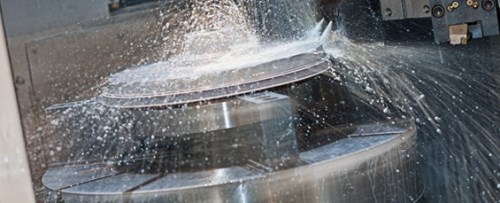The Case for VTLs
The vertical lathe configuration offers advantages that go beyond large-part machining.
Share







Joe Thole, applications engineer with machine tool distributor Hartwig, says the VTL (vertical turning lathe, vertical turret lathe or vertical table lathe—take your pick) offers advantages that go beyond the main advantage most people see.
That main advantage is that a VTL offers a practical way to turn large and heavy parts. The part sits atop the spindle like it is resting on a table.
But there are other advantages, he says. A VTL is inherently rigid, because cutting force is directed down into the base of the machine. Also, this lathe type is more floorspace-efficient than a horizontal lathe, because in the case of the vertical, the machine’s volume extends upward instead of being spread out across the floor.
Then there are the myths. VTLs are not more difficult to program, he says—programming is essentially the same as for a horizontal lathe. More significantly, VTLs are not dependent on large parts. Shops question whether they have enough large-part machining work to justify a vertical lathe, but the question really should be whether they have enough work in general. When there are no large parts to be run, the VTL can still deliver value by running average-sized workpieces.
Photo courtesy of Okuma.
Related Content
-
Inverting Turning and Five-Axis Milling at Famar
Automation is only the tip of the iceberg for Famar, which also provides multitasking options for its vertical lathes and horizontal five-axis machine tools.
-
Inverted Milling Offers Power in a Compact Machine
To compete in terms of stability and horsepower, Modig’s recent IM-8 mill takes an unorthodox approach: positioning the spindle at the bottom of the work area.
-
4 Tips for Staying Profitable in the Face of Change
After more than 40 years in business, this shop has learned how to adapt to stay profitable.















